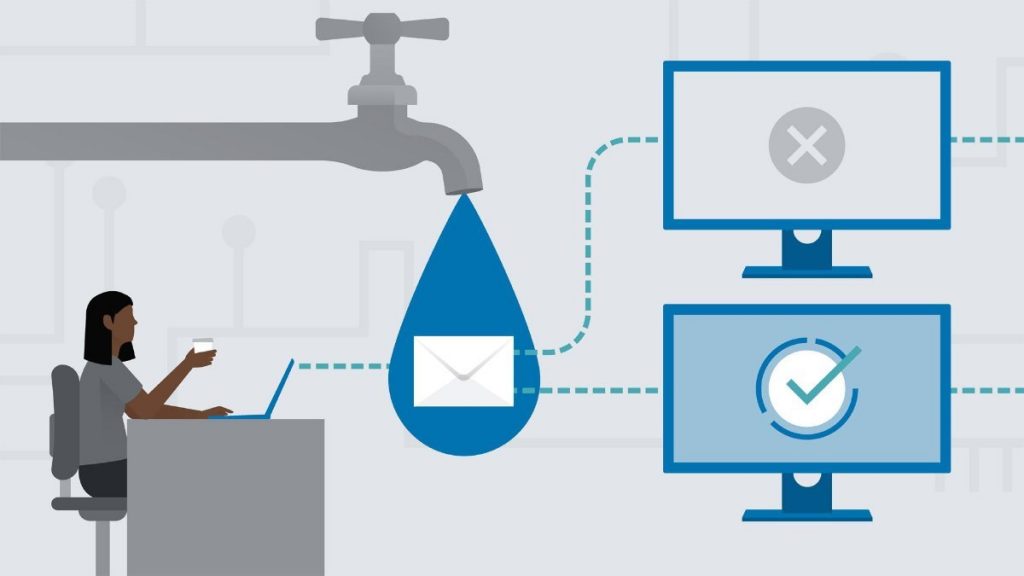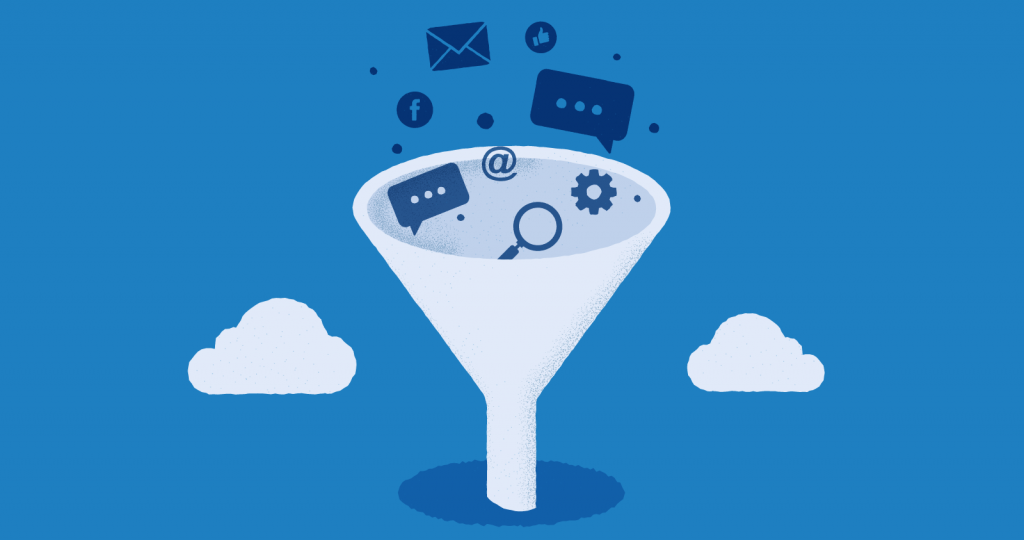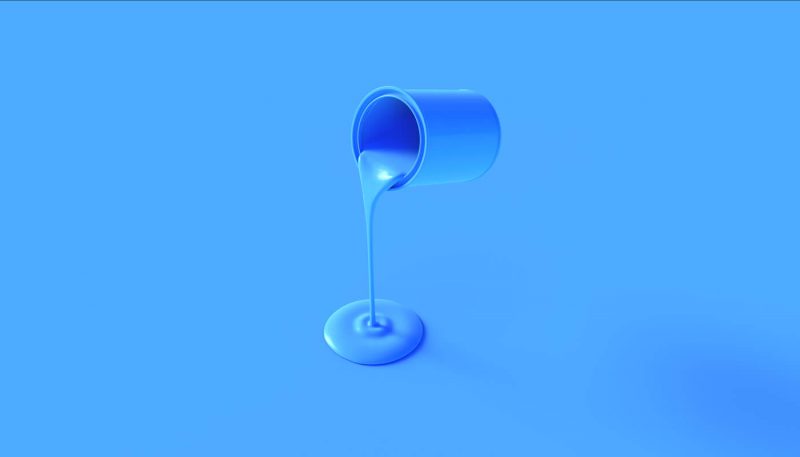What is Drip Marketing – Guide to Creating Email Nurture Campaigns
We will draft 3 versions of each of the 5 messages, reflecting top, middle, and bottom of funnel buying stages, and speaking to the most common questions we see at those stages. Adjustments to email messaging will be driven primarily by email clicks, and secondarily by on-site behavior including number of product views.
For the purposes of the drip campaign, we will be creating offer cohort specific lists within HubSpot and managing email sends with MailChimp.
Ads linking to the signup page will advertise one of two proposed initial offers:
- Offer A is a free starter kit (value $10, offer capped at 500 units)
- Offer B is a free foundation with purchases over $20 (value $10, up to 500 units)
Analyze Past Email Performance – Learn from What’s Worked
To inform a drip email campaign strategy, if at all possible take a look at past email performance to see what’s worked well with your customer base, and what might need some tweaking as you move into a new campaign with a fresh audience. Even if you’re drawing from a relatively small pool of past email campaigns or one-off sends, it’s worth taking a look to see if any trends emerge across the following categories.
Analyze Email List Composition
Is your current email list derived entirely from newsletter signups on your website? From Facebook lead generation campaigns? What messaging did these users see, and how should that tie into the information they receive from you next?
Even if your list is relatively small, plan for growth by adding additional segmentation such as: general news, special offers, product use tips, and overall lifestyle or topics ancillary to your products, to enable you to provide more targeted messaging to your customers.
Analyze Past Email Performance
Don’t just stop with your email management system here, or with Google Analytics. You should have at least two sources for information on email recipient behavior, to tease out which subject-lines, topics, and landing pages resonated with your audience to date.
If Google Analytics tracking has been inconsistent, time to head to MailChimp, OmniSend, aWeber, Klaviyo, or whatever other email marketing platform you’ve selected.
If there are gaps in your email-to-web-analytics tracking when you get under the hood, use it as a catalyst to make sure that your email system always has any web analytics integrations and options turned on by default.
Analyze Your Email Subject Lines
To do a simple analysis of your best subject line(s), look at open rates, click through rates (CTR), bounce rates, spam, and unsubscribes. There’s plenty more you can do here, but for simplicity’s sake as you start out with drip campaigns this will give you decent direction.
Consider which of your subject lines had the best open rate and see if you can spot common elements. Which of those could you replicate? What motivations or segments do these speak to?
In this case, our top three example open-rates came from emails that spoke to time-sensitive announcements. “Big news”, “Exciting news”, and “It’s a party”. Intuitively, this might speak to having an already-engaged audience, or a general propensity to try new things.
But don’t stop with open rates, which taken by itself can lead you to a different or even wrong conclusion about what your audience wants to hear.
Look for differences between open-rate winners, and CTR winners. Are you promising one thing and sharing another? Which of the topics that you’re sharing with the audience not only pique interest enough for a glance (email open), but engage them to want to click through to a promotion, article, or resource?

In our sample case above, the best CTR came from subject lines that were timely or valuable at the moment of initial send, including terms like “Voter fatigue” and “Martha Stewart.” Another strong performer referenced a video resource which may be something we’d want to test by offering similar resources. All of these offer something for the customer – an exciting experience, a video to watch, something from Martha, or a sincere, and timely appeal.
Pay Attention to Unsubscribes, Bounces and Spam
Are there topics, subjects, or other elements that you’ve sent in the past where you’ve generated a higher unsubscribe rate and more spam signals? You can’t afford to myopically focus on new additions as you build and maintain your email list. You should have a clear picture of how you’re doing at speaking to and maintaining your audience with useful, appreciated information.
A corollary: clickbait will get you attention, and potentially even more subscribers, but you can certainly burn out your list by over-using any one tactic.
Is your audience sending you signals that you can use to refine future email nurture efforts? Do they prefer a more personal tone, or less personal? Do they respond well to certain offers, but not others? Would they rather see your brand name, or more about the offer?
Analyze Past Results to Determine Best Day and Time of Day to Send Email
Is there a particular day of the week that generates your highest open rate and CTR for past emails? Again, you need to look at this for both open rate and CTR, in order to get the best possible picture.
Be sure to annotate your results with any anecdotal knowledge of what may be driving them. That might include days you’ve conditioned your audience to expect a note from you, if you send promotions on one day but resource blog posts on another, etc.
And although more and more email platforms are offering automated insight into the best time to send email, it’s a really good idea to do this analysis yourself. If for no other reason, it allows you to add the same kind of color to the analysis with what you might be doing that could skew results.
Drip Email Plan – An Example – Converting Trials to Long-term Customers
Email Content
Start With Your Values – Align With Customer Desires

If your customers value natural skin care products that are made by hand, give potential customers an introduction to the products and facets of your brand that lean into these attributes. Make the emails inclusive, supportive, and invigorating.
Bottom line: your email readers should feel part of an exclusive, or highly understood group with specific values.
What to Send in Your Email Drip Campaign – An Example
Let’s say this drip campaign is specifically for new customers who wish to try our your product. The email nurture campaign could flow through the following schedule, updated based on the actions taken by the customer as described earlier:
Email #1
Trigger – Completed sign-up
Email Content
The introductory email will be sent after the customer fills out the email sign-up page. It will confirm receipt of anything you’ve promised, and will welcome the reader to your audience or community.
Email #2
Trigger – Hypothetical offer item ships
Email Content
The second email could or should send when your ERP or warehouse confirms they’ve shipped your promotional item, or first order. This email should evoke enthusiasm about the product and the brand. It should also offer some information about the product appealing to the target market.
Email #3
Trigger – Scheduled Follow-Up
Email Content
A week after the product or offer is delivered, send a follow-up email reiterating the value of the products and making the reader feel more connected with the brand.

Email #4
Trigger – Scheduled Reorder Reminder / Product Running Low
Email Content
Let’s imagine that two to three weeks after the product is delivered, the customer would be close to running out of your sample product and assessing its value. In that critical period, an email could and should remind the customer what sets your brand apart from other products and provide a clear call to action to purchase more or different parts of your product line.
Email #5
Trigger – Scheduled Promotion – Treat a Friend
Email Content
Three or four weeks after receiving the product, a promotional email will be sent, giving the reader the opportunity to treat a friend to a free starter kit.
Email #6
Trigger – Scheduled Thank You + Sign Up
Email Content
Four or five weeks after receiving the product, we might reiterate some core pillars of our positioning, in the form of benefit statements from using our category. Not necessarily hammering the customer with a heavy sales message. Continuing the example, the email might provide informational support resources for the reader to take care of their skin even beyond the use of skin-care products. The email should thank the reader authentically and genuinely for their time and trial of the products, and provide a clear call to action to sign up for a regular newsletter flow.
Notice that our simple, regular newsletter hasn’t even been mentioned to this point, let alone assumed to be something the customer opted into. The permission to send this kind of regular messaging should be cultivated, asked for, and cared for.

Example Drip Campaign Recap
Again, the example schedule and email series here is focused on nurturing a new or trial customer to convert to a long-term, brand loyal customer. You may have other goals, a different purchase cycle, and very different brand positioning, all of which would merit significantly different content and cadence.
A Few General Best Practices for Email and Drip Campaigns
Email Subject Line Best Practices
With some exceptions, the ideal subject line should be 30-50 characters, avoid excessive punctuation, capitalization and symbols, and be both engaging and descriptive.
Email Length Best Practices
Email communications are a complement to your website, not a replacement. Meaning it’s best not to bury your key messages such as a great deal, resource title, or useful info under too much description, clarification about offers, or other fine print. Link out to your site for the details, and keep your email focused.
Paragraphs should be no longer than 4-5 lines long and followed up by bullet pointed features for easy reading.
Respect the amount of time your users have, and how much else they’ve likely received in a typical inbox.
Email Call to Action Best Practices
While it’s always a good idea to provide a contextually relevant next step, it’s not every single message that needs a high visibility eye-grabber. Especially if your email is simply a gentle reminder to, for example, make use of a trial product the customer has in their office or home.


